Why Do Websites Think I'm a Bot? And How to Solve Them

Lucas Mitchell
Automation Engineer
20-Feb-2025
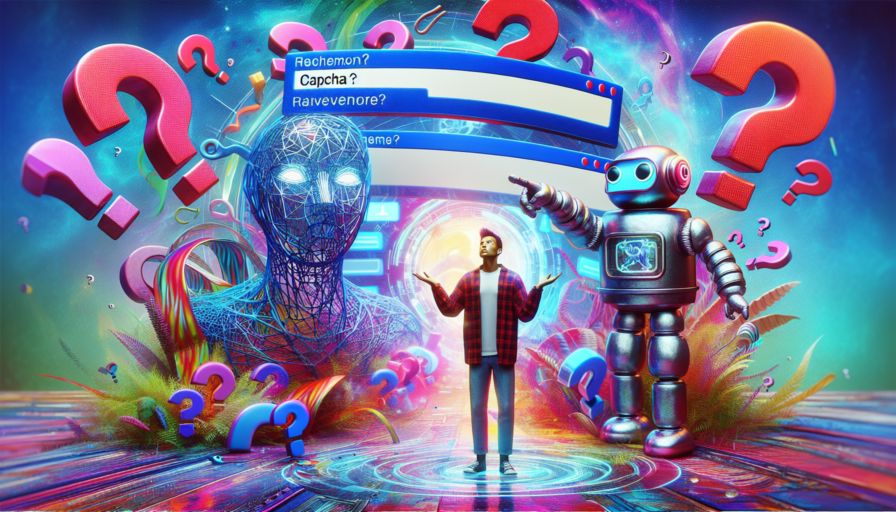
It’s frustrating when you’re simply trying to browse or interact with a website, only to be greeted with a Captcha challenge—especially when you’re not a bot. Websites that think you’re a bot can hinder your ability to access content, services, or even complete basic tasks like logging in or making purchases. This experience is becoming increasingly common as websites implement advanced anti-bot technologies to protect themselves from malicious attacks, data scraping, and fraud.
Why Websites Think You're a Bot
According to a 2023 report by Distil Networks, nearly 30% of all web traffic is now considered to be from bots. This has led websites to adopt stricter measures to differentiate between legitimate human users and automated bots, often resulting in users facing CAPTCHA verification challenges. CAPTCHA (Completely Automated Public Turing test to tell Computers and Humans Apart) is a security tool that aims to prevent bot activity by presenting challenges that are difficult for machines but easy for humans. These tests have become more sophisticated in recent years, making it more challenging to them.

Common Triggers for Bot Detection
| Trigger | Description | How to Avoid |
|---|---|---|
| High Request Frequency | Rapid or excessive requests to a website may indicate bot activity. Scraping data or using automated tools can result in this trigger. | Limit request rates, use delays between requests, and employ proper throttling strategies. |
| Suspicious IP Address | IP addresses used for bot activity (such as VPNs, proxies, or shared IPs) are often flagged by websites. | Use clean, dedicated residential IPs or rotate proxies. |
| Unusual Browser Behavior | Bots don’t simulate human actions like mouse movements, scrolling, or random clicking patterns. Websites often detect these irregularities. | Mimic human browsing behavior with tools like Puppeteer or Playwright. |
| CAPTCHA Systems | Websites use CAPTCHA challenges to determine if the user is a bot. CAPTCHA systems are evolving, making them more difficult for automated systems to solve. | Use reliable CAPTCHA-solving services or AI-powered solutions. |
| Browser Fingerprinting | Websites collect data on how a browser interacts with a site, including screen resolution, fonts, and plugins. If your browser's fingerprint is too similar to known bots, it can raise suspicion. | Use more dynamic and human-like browsing behaviors and tools that manage browser fingerprints. |
How to Solve CAPTCHA Challenges Effectively
CAPTCHA challenges are an essential part of internet security, but they can be a barrier for users engaged in legitimate activities like web scraping or accessing protected resources. Thankfully, there are tools and services that can help you solve CAPTCHAs quickly and effectively without disrupting your workflow.
Best such service is CapSolver, which offers reliable CAPTCHA solving solutions tailored to meet the needs of web scraping and automation tasks. CapSolver supports a variety of CAPTCHA types, providing a smooth and seamless experience for users.
Here are a few ways CapSolver can assist in solving CAPTCHA challenges:
-
API Integration: With CapSolver’s easy-to-use API, users can integrate CAPTCHA-solving capabilities directly into their web scraping or automation scripts. This allows users to solve CAPTCHAs programmatically, without any manual intervention.
-
High Success Rate: CapSolver boasts a high success rate in solving CAPTCHA challenges across different platforms. This ensures minimal disruptions and allows users to continue their activities uninterrupted.
-
Real-Time Solutions: CapSolver provides real-time solutions, solving CAPTCHAs in a fraction of the time it would take for a human to do so. This is especially useful when handling large-scale web scraping operations or when you're working with multiple CAPTCHA challenges at once.
-
CapSolver Chrome Extension: If you encounter CAPTCHA challenges while browsing or interacting with websites, the CapSolver Chrome extension can be a game-changer. This extension integrates seamlessly into your browser, solving CAPTCHA challenges on your behalf automatically to solve Captcha like invisible
So Why Not to Claim Your Bonus Code for top captcha solutions -CapSolver: CAPT. After redeeming it, you will get an extra 5% bonus after each recharge, Unlimited
Sure! Here's an updated version with a section highlighting reCAPTCHA and how CapSolver is proficient in solving it:
The Most Common CAPTCHA: reCAPTCHA
Among the various CAPTCHA systems in use today, reCAPTCHA is one of the most common and widely recognized. This CAPTCHA system, developed by Google, is designed to prevent bots from engaging in malicious activity such as data scraping, brute-force attacks, and fraudulent logins. reCAPTCHA comes in various forms, including image recognition challenges, simple checkboxes ("I'm not a robot"), and more advanced versions like reCAPTCHA v3, which evaluates user behavior to assign a score indicating whether the user is a bot or not.
This is whereCapSolver excels. CapSolver's both API and Extension specializes in solving reCAPTCHA v2/ v3 challenges efficiently and reliably. Whether you're facing the latest version of reCAPTCHA v3, which involves more sophisticated machine learning methods for detecting bots, or earlier versions like reCAPTCHA v2, CapSolver has the expertise and technology to help you solve these challenges.
Other Solutions for Overcoming Bot Detection
While CAPTCHA-solving services like CapSolver are effective for solving CAPTCHA challenges, there are other techniques you can employ to avoid being flagged as a bot in the first place:
-
Use Residential Proxies: Many websites flag IP addresses associated with data centers, VPNs, or proxies as potential bots. Residential proxies, on the other hand, use real user IP addresses and are less likely to be detected.
-
Randomize Your Behavior: Mimic human-like behavior by randomizing your actions on a website. For example, incorporate mouse movements, clicks, and pauses between actions to avoid detection by sophisticated bot-detection algorithms. Tools like Puppeteer, allow you to automate web interactions with human-like behavior.
-
Rotate User Agents: Websites often use user-agent strings to detect bots. These strings reveal the type of browser or device being used, and if they are consistent across multiple requests, they can be flagged as suspicious. By rotating your user agent and adjusting your browser’s fingerprint, you can make it harder for websites to identify you as a bot.
The Importance of Human-Like Interactions
Websites that implement anti-bot measures rely on behavioral analysis to detect automated systems. By simulating human-like interactions, you reduce the likelihood of triggering bot-detection systems. Some steps to enhance human-like interactions include:
-
Slow Down Your Browsing Speed: Rapid clicks, scrolling, and page requests can give away the fact that you’re using a bot. Try to mimic the pacing of a real user, such as pausing between clicks and scrolling at a natural speed.
-
Engage with Content: Humans tend to engage with content on a website. Instead of jumping straight to the target URL or data, navigate the site like a real user. This can reduce the chances of triggering anti-bot measures that monitor user behavior patterns.
-
Mouse Movements: Bots often fail to replicate the natural and erratic mouse movements of human users. By incorporating random mouse movements in your browsing or automation scripts, you can avoid detection.
Conclusion
If you're wondering, "Why do websites think I'm a bot?", it’s typically due to how your browsing behavior triggers bot-detection systems. Websites monitor patterns like high request frequency, suspicious IP addresses, unusual browser behavior, and interactions with CAPTCHA challenges to identify bots.
To avoid being flagged, you can use solutions like CapSolver, which specializes in solving CAPTCHA systems. Along with mimicking human-like actions and using residential proxies, you can successfully navigate bot protections and continue browsing or automating tasks smoothly.
FAQ
How do I stop websites from thinking I'm a bot?
To stop websites from thinking you're a bot, you need to avoid triggering bot-detection systems. Use tools like CapSolver for solving CAPTCHA challenges, simulate human-like behavior (such as mouse movements and pauses), use residential proxies to avoid flagged IPs, and rotate your user-agent to prevent detection.
Why do websites always think I'm a robot?
Websites often flag users as robots based on unusual behavior such as high request frequency, suspicious IP addresses (like VPNs or proxies), and non-human browsing patterns. CAPTCHA challenges are commonly used to differentiate between human and bot activity. If you face this issue regularly, it's a sign that your browsing behavior triggers these detection systems.
What to do when a website thinks you are a bot?
When a website thinks you're a bot, the best approach is to use CAPTCHA-solving services, rotate your IP address using residential proxies, and adjust your browsing behavior to mimic human actions. Tools like Puppeteer can help automate web interactions in a natural way to avoid detection.
Why am I constantly being asked if I'm a robot?
Being repeatedly asked if you're a robot typically happens when websites detect behavior that aligns with bot activity, such as rapid requests, suspicious IP addresses, or unnatural interactions with the website. Implementing strategies to solve CAPTCHAs and adopting more human-like browsing behavior can reduce the frequency of these requests.
Compliance Disclaimer: The information provided on this blog is for informational purposes only. CapSolver is committed to compliance with all applicable laws and regulations. The use of the CapSolver network for illegal, fraudulent, or abusive activities is strictly prohibited and will be investigated. Our captcha-solving solutions enhance user experience while ensuring 100% compliance in helping solve captcha difficulties during public data crawling. We encourage responsible use of our services. For more information, please visit our Terms of Service and Privacy Policy.
More
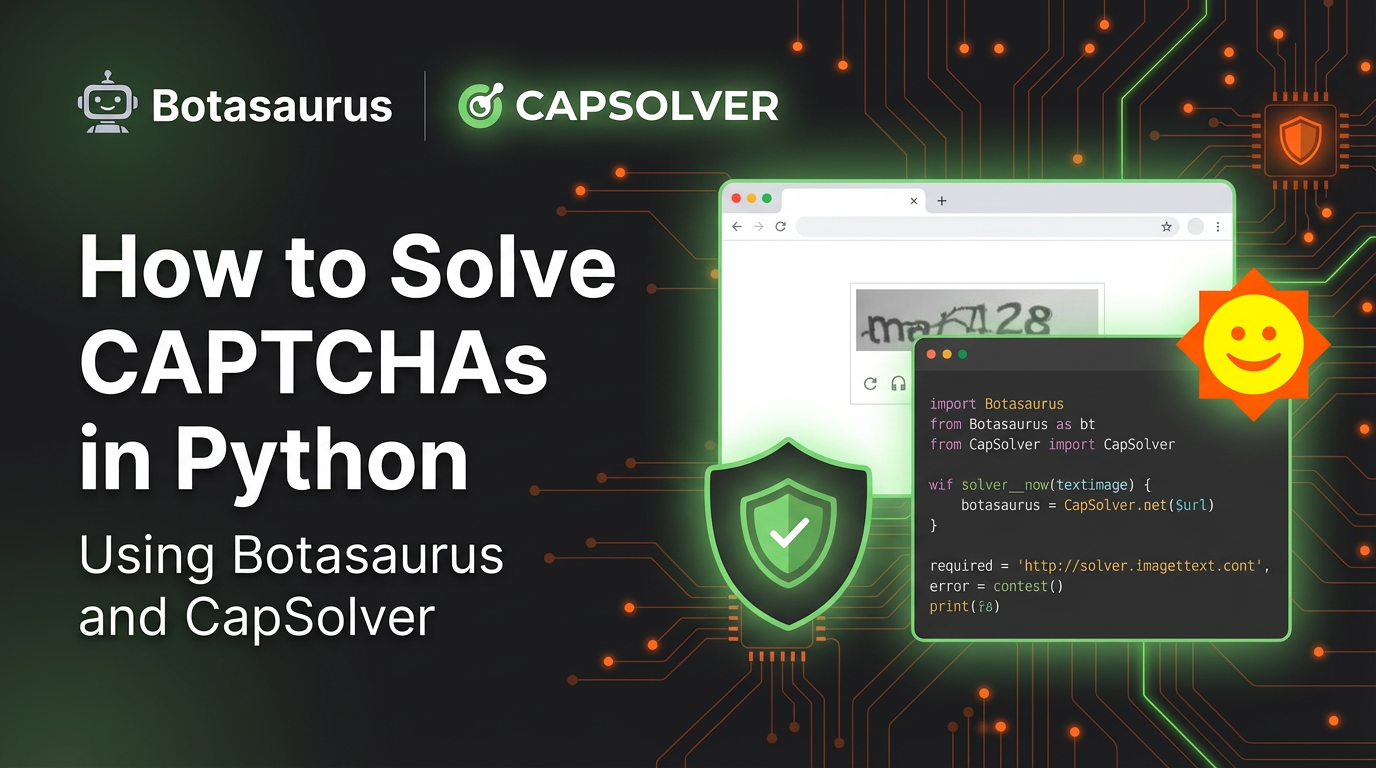
How to Solve CAPTCHAs in Python Using Botasaurus and CapSolver (Full Guide)
Learn to integrate Botasaurus (Python web scraping framework) with CapSolver API to automatically solve reCAPTCHA v2/v3 and Turnstile.

Lucas Mitchell
12-Dec-2025
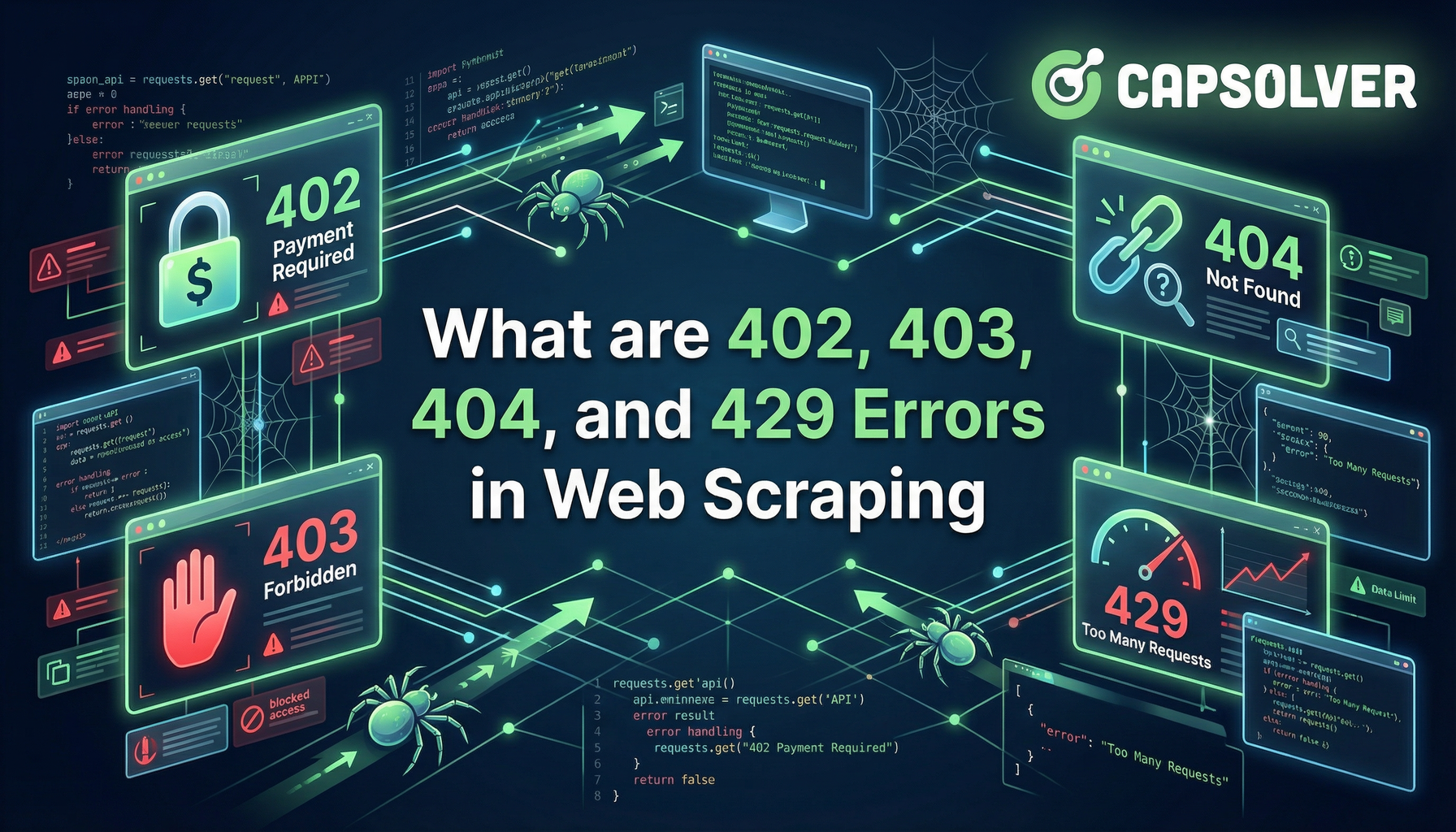
What are 402, 403, 404, and 429 Errors in Web Scraping? A Comprehensive Guide
Master web scraping error handling by understanding what are 402, 403, 404, and 429 errors. Learn how to fix 403 Forbidden, implement rate limiting error 429 solutions, and handle the emerging 402 Payment Required status code.

Sora Fujimoto
11-Dec-2025

Best Web Scraping APIs in 2026: Top Tools Compared & Ranked
Discover the best Web Scraping APIs for 2026. We compare the top tools based on success rate, speed, AI features, and pricing to help you choose the right solution for your data extraction needs.

Ethan Collins
11-Dec-2025
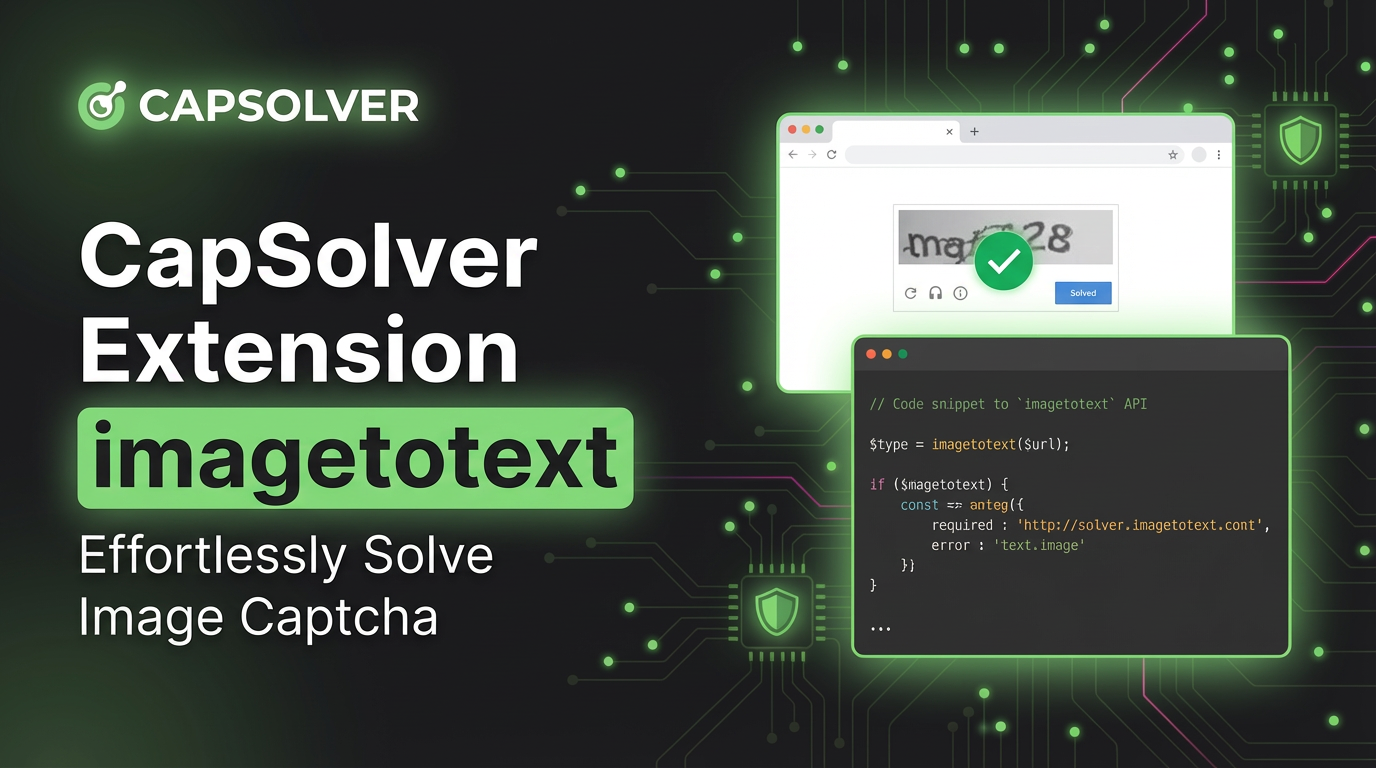
CapSolver Extension: Effortlessly Solve Image Captcha and ImageToText Challenges in Your Browser
Use the CapSolver Chrome Extension for AI-powered, one-click solving of Image Captcha and ImageToText challenges directly in your browser.

Lucas Mitchell
11-Dec-2025
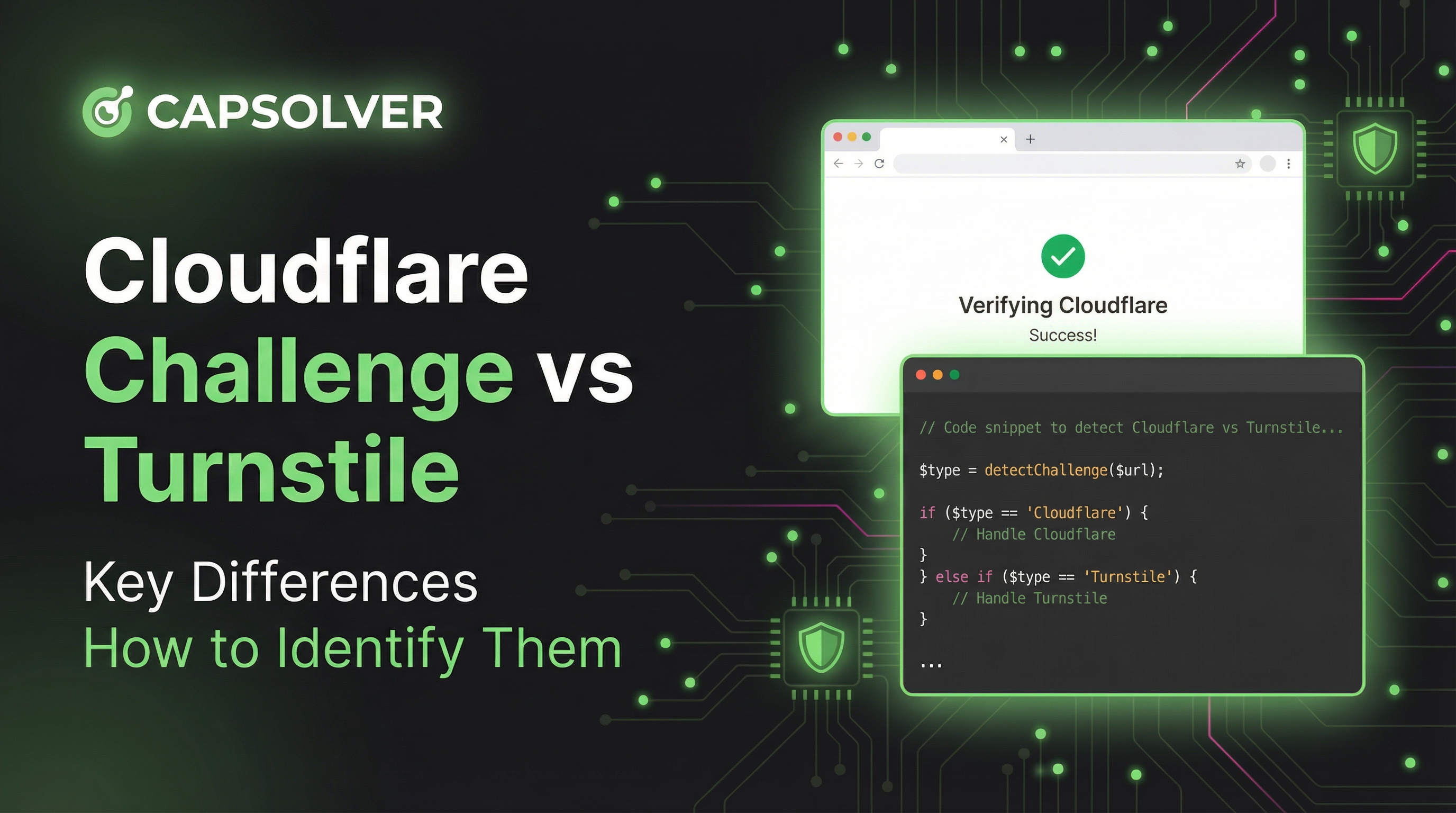
Cloudflare Challenge vs Turnstile: Key Differences and How to Identify Them
nderstand the key differences between Cloudflare Challenge vs Turnstile and learn how to identify them for successful web automation. Get expert tips and a recommended solver.

Lucas Mitchell
10-Dec-2025
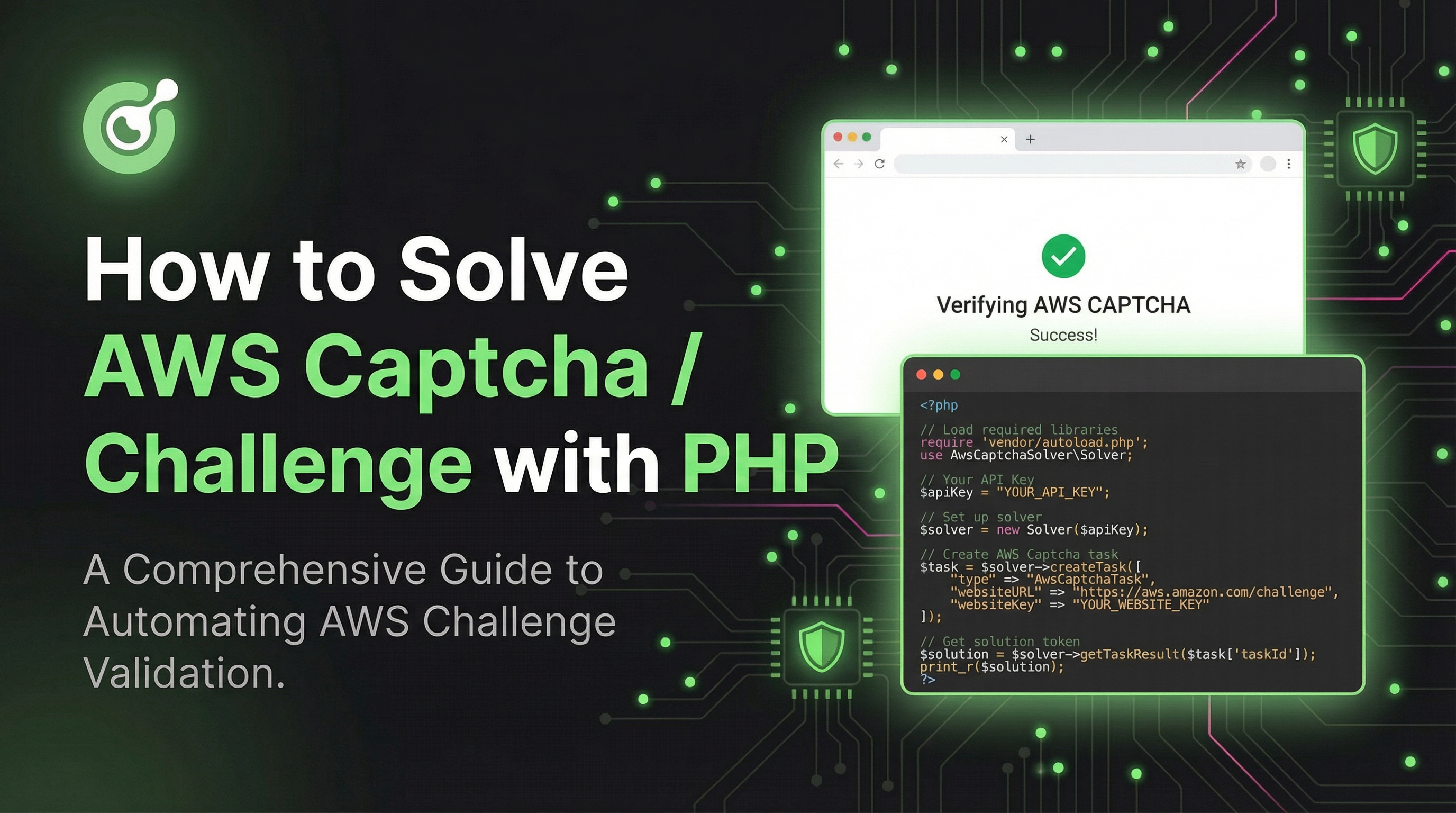
How to Solve AWS Captcha / Challenge with PHP: A Comprehensive Guide
A detailed PHP guide to solving AWS WAF CAPTCHA and Challenge for reliable scraping and automation

Rajinder Singh
10-Dec-2025


